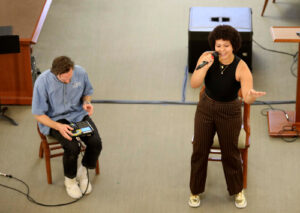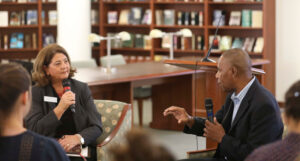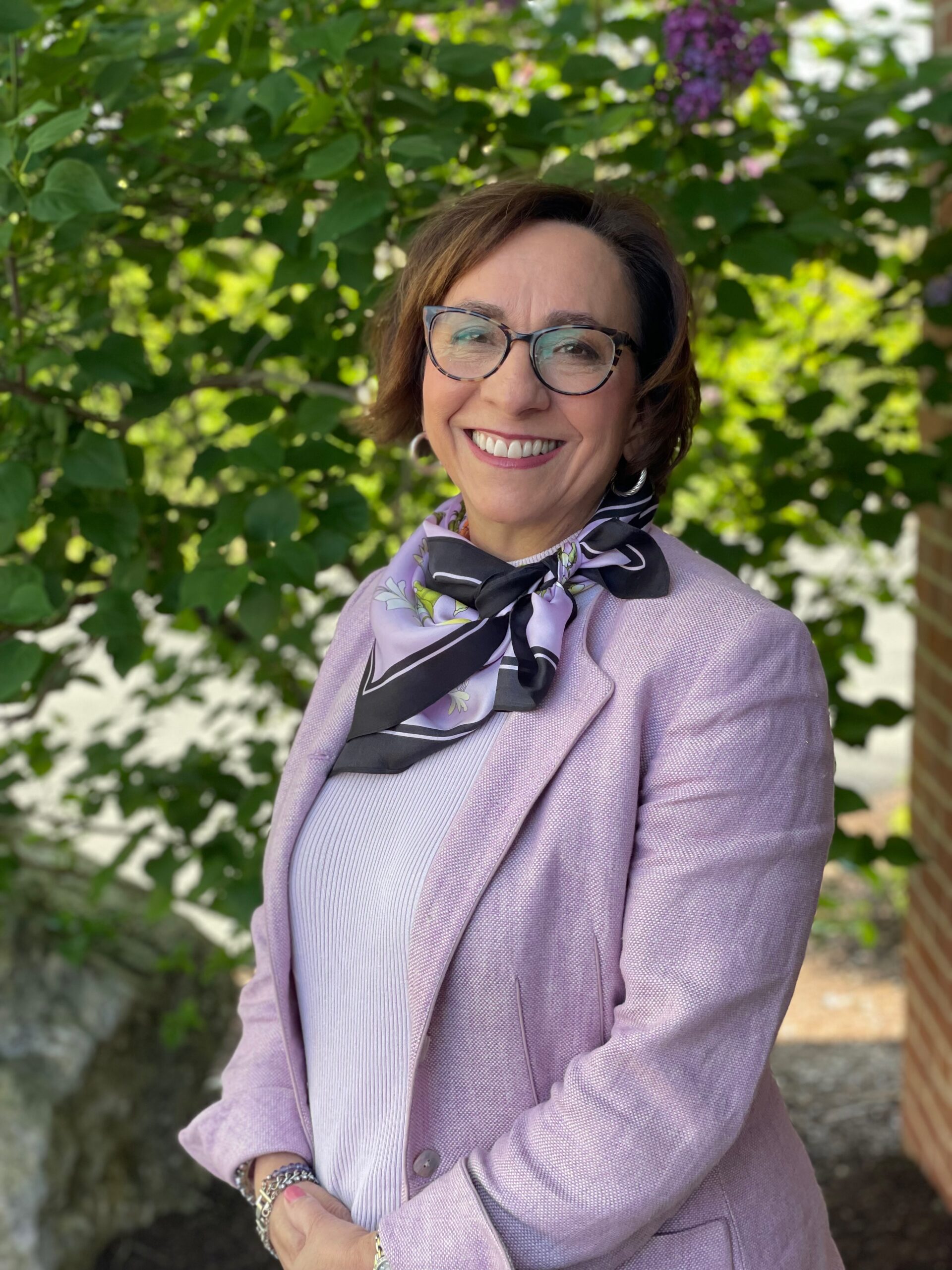
One faith was reflected in four engaging styles of worship at a Celebration of the Colors of Our Faith hosted by Wordship and the Council for Intercultural Engagement last week.
Harpist Sophia Secrest and cellist Connors Ray joined the Concert Choir for the traditional hymn “Be Thou My Vision,” followed by Dr. Thom Parham, professor of communication and media studies, singing the gospel song “God’s Not Dead.” Freshman nursing student Nadia Battle had the audience clapping and cheering along as she performed “Beauty in Gray,” a beats/hip hop number written and produced by Area Coordinator Dan Read. Voice Professor Mark Aliapoulios closed with “Ride on King Jesus,” a traditional spiritual.
Those diverse styles of worship set the tone for a discussion led by Wordship Director Dr. Stephanie Bennett and Dr. Terriel Byrd, chair of the Council for Intercultural Engagement. Byrd recalled the apostle Paul’s instructions to the Ephesians to “address one another in psalms and hymns and spiritual songs, singing and making melody to the Lord with your heart.”
“Worship is our way of paying homage to God,” Byrd said. “Often, the focus gets taken from God and placed on each other, as though worship becomes a performance instead of an act of praise to God.”
Bennett added Jesus’ words in John 4:23: “true worshipers will worship the Father in spirit and truth.”

Sometimes we aren’t able to connect with one another because we don’t know each other’s experiences, Byrd said. In the early 1800s, camp meetings — outdoor religious revivals — brought Blacks and whites together to find meaning for their disparate lives. Conversely, although Presbyterians did much to aid the anti-slavery movement, few Blacks would join them during Sunday morning worship, explaining “they’re a little too orderly,” Byrd said.
“I grew up Baptist, in a hallelujah, Amen, thank you Jesus church,” Byrd said. “If it was silent, people would want to know who died.”
Bennett shared her appreciation of the role of silence in Quaker meetings. Sometimes people make the mistake of conflating true worship with music, she said. In recent years, people also have failed to recognize “worship as part of the Word.” Spiritual formation used to take place through hymns with deep theological significance, she said.
“We need to be sure there is a solid, biblical foundation in the songs that we sing,” Bennett said.
Varying expressions of worship have always sparked controversy, Byrd said, citing the example of famous American gospel musician Thomas Dorsey, who was not allowed to perform in churches because he used the organ and drums. That controversy continued through the ages. Bennett said when she and her husband, a drummer, were on the worship team together in the 1980s, they faced criticism from people who claimed “drums are of the devil.”

Instead of criticizing one another, believers can learn different styles of worship from one another. Byrd shared a story from when he pastored in Ohio and exchanged pulpits with the pastor of a predominantly white church. The other pastor suggested they exchange their gospel and hand bell choirs, too. Byrd said he was uneasy about how the bell choir would go over at his church.
It turned out, there was nothing to worry about. When the bell choir finished, the African American members of Byrd’s church lined up to say they wanted to learn to play.
“When we begin to understand each other’s world, that’s how we grow,” Byrd said.
Anyone who is born of God and has the spirit of God is connected, he said, referring to 1 Corinthians 12.
Added Bennett, “The music that we all love can bring us together if we understand that oneness.”


